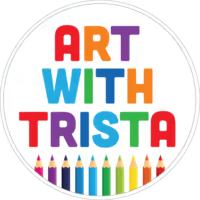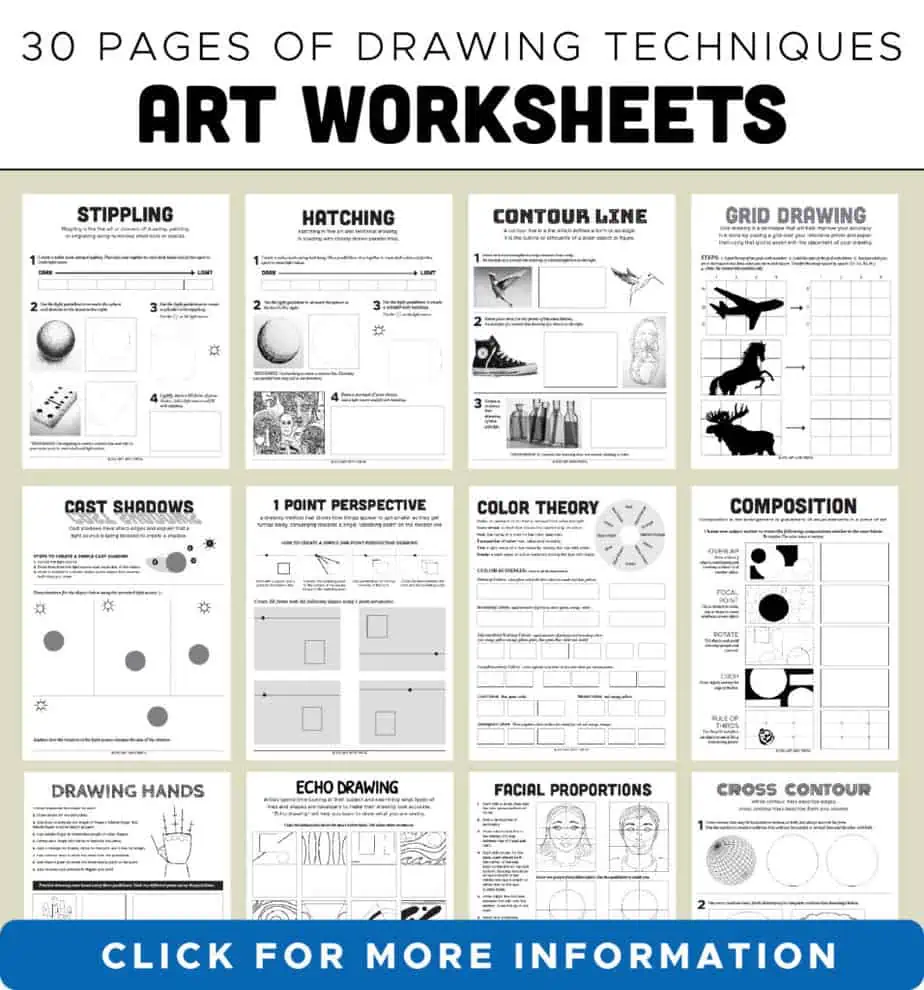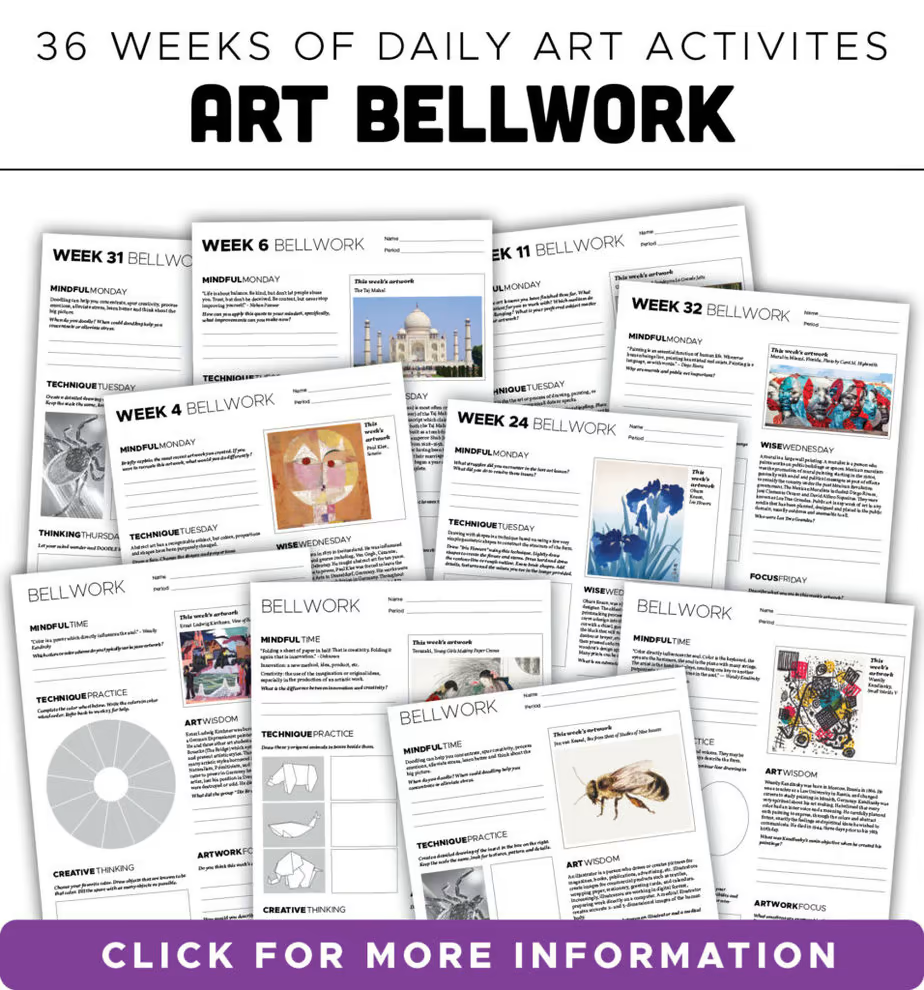I designed several art games for the classroom to help enrich my art curriculum. I use this set of games for students to play in small groups, as a whole group or rotating stations. These games are perfect for early finishers, before breaks, shortened class periods, review for exams, assessments or just for a bit of fun! Here’s the games I made and how I did it.
Art Jeopardy
I modeled my Jeopardy game after the TV show and included a variety of categories, such as color theory, famous artists, art history, elements of art and drawing skills. Then I wrote questions that ranged from easy to difficult, including information I have and have not taught my students. My students always surprise me with the interesting facts they can recall. I use this game with large teams or as a student-led game with a small group of contestants and a student “host”. The picture below shows how I designed the printables so I could tape them to a wall or whiteboard to make a game board.

Art Trivia
For this game, I wrote 60 facts about artists, genres, mediums, art tools, as well as a variety of art vocabulary definitions. The questions also range from easy to difficult. This game can be a teacher-led whole group activity using whiteboards to display the answers, or played with a small group of contestants and a student “host”. I created this in a page format, listing questions and the answer. I used a dotted line to separate each question. A single caller can read the questions from the page, or they can be printed, cut apart, and put is an envelope or box for students to draw and read to each other.
Art Bingo
Everyone LOVES bingo! I have been playing bingo with my students of all ages for years and they love it. Their adrenaline gets pumping and they are so excited to hear the next word to be called. With that being said, I optimize this undivided attention and give students content I want them to remember. I created two versions of bingo, one that covers art vocabulary and the other about art history. I included the definition of the vocabulary terms on the calling cards, so the caller can provide the definition and the students have to search for the correct vocabulary word. The art history version is similar with interesting facts and definitions about artists and genres.
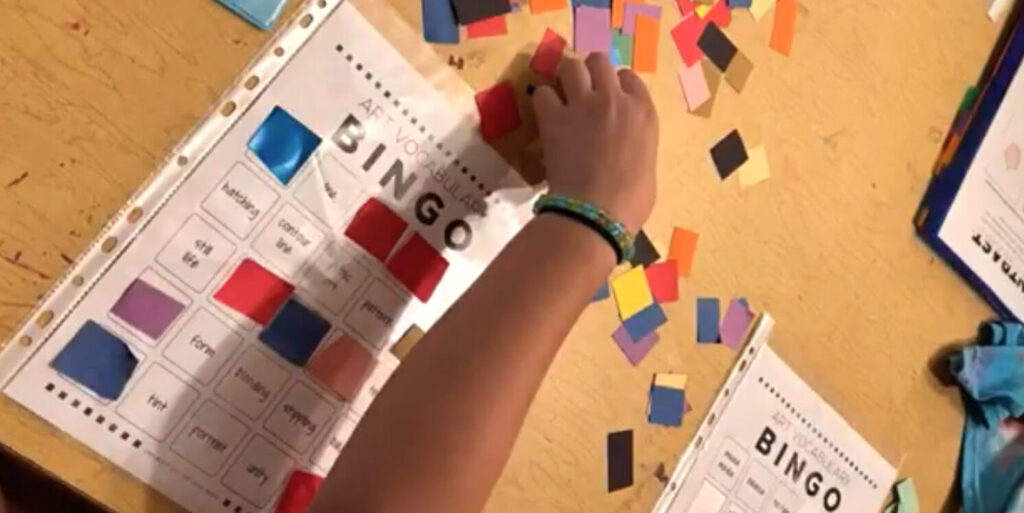
Memory Game
I made 24 different art tool cards that include a simple image of the tool and words to describe it. I printed 2 sets of these cards on card stock and cut them into individual cards. The students mix the cards and flip them over so the image is facing the table. It works best to arrange the cards in rows. The students take turns flipping 2 cards at a time. If they flip over a pair, they keep it and try again. If they do not get a pair, it is the next player’s turn. When all of the cards have been taken each player counts their stack of cards. The player with the most pairs wins. It’s a great way for students to make a visual connection to common art room tools.
Art Career Scavenger Hunt
The idea behind the art career scavenger hunt is to allow students to move around and search for their answers. I created 14 art career information sheets with different art related jobs. To help preserve the information sheets, I laminate them or put them in a plastic sleeve. Next, I hang the information sheets around the room, hallway or outside for students to find. The students use a spreadsheet-like worksheet I created with space for them to write the career, job description, salary, education and possible jobs within that field found on the art career information sheets. I use this as a lesson and provide students the option to work independently or with a partner. The first person to complete the worksheet gets a prize and they all get the gift of knowledge about possible art-related careers!
Whiteboard Pictionary
As an artist, Pictionary has always been my favorite game! I created five different categories: people, objects, places, actions, and animals. Then, I print them with many items on a page separated by dotted lines so they can be cut apart to make many small slips, each with a drawing prompt. I like to keep each category in an envelope and have the student artist draw the clue from the envelope. Sometimes I announce the categories and sometimes I keep it a secret to make the game more challenging.
The artist has 60 seconds to draw, and the rest of the team must guess what the artist is drawing in the allotted time. The artist may not talk, make noises, or gestures, and no letters or numbers are allowed in the pictures. If guessed correctly, the team gets a point. If they are wrong, it’s the next team’s turn. The team with the most points wins.
Playing these games as a class is always a nice change of pace for the students and myself. I like to keep these games as a backup plan, if my lesson is not quite ready, I am waiting for supplies or maybe I just need something less messy. Best of all, I can justify using them, because these games have educational and engaging art related content for my students.
My Art Games Bundle featuring all these games is available here.
I hope you can also carve out a little time for some fun and games this school year!
Have fun, Trista
If you liked this Art Games for the Classroom post, please subscribe by clicking here.
Check out my How To Page for more posts like this.
